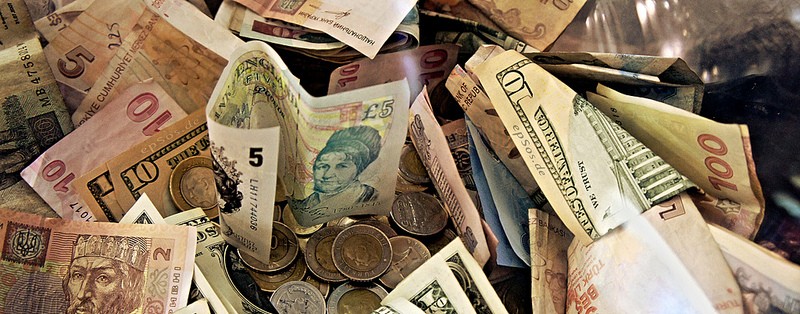Raghuram Rajan, ex- faculty member of the Booth School of Business at the University of Chicago, ex-head of the research department of the IMF, and currently Governor of the Reserve Bank of India (its central bank), set off a storm of comment when he warned of a breakdown in the global coordination of monetary policy. Frustrated by the decline in the foreign exchange value of the rupee that followed the cutback in asset purchases by the Federal Reserve, Rajan claimed that the Federal Reserve was ignoring the impact of its policies on the rest of the world. Does he have a valid cause for concern?
Quite a few folks have weighed in on this matter: see here, here, here, here, here and here. Rodrik and Subramanian make several interesting points. First, the Federal Reserve was criticized when it lowered rates, so complaints that it is now raising them are a bit hypocritical (but see here). Second, blaming the Fed for not being a team player as the emerging markets were when they lowered their rates in 2008-09 is not a valid comparison. The emerging markets lowered their rates then because it was in their interest to do so, not out of any sense of international solidarity. Third, their governments allowed short-term capital inflows to enter their economies; did they not realize that the day could come when these flows would reverse? Finally, their policymakers allowed the inflows to contribute to credit bubbles that resulted in inflation and current account deficits, which are significant drivers of the volatility.
Moreover, the Federal Reserve is constrained by law to promote maximum employment, stable prices, and moderate long-term interest rates in the U.S., not the global community But couldn’t turmoil in the emerging markets threaten U.S. conditions? Robin Harding at the Financial Times thinks this is an unlikely scenario. He points to two channels of transmission between the U.S. and the countries that have shown the most turbulence: exports and financial markets. The emerging market nations that have witnessed the most volatility account for very small proportions of U.S. exports. (China, on the other hand, does claim 7.5% of our exports, but so far has not suffered any signs of distress (but see here).) In addition, financial flows might be affected, but to date these have resulted in lower interest rates in the U.S. due to a flight to safety. Previous shocks from the emerging markets pushed U.S. stock prices down, but these effects were short-lived. Therefore, Harding claims, “…it would have to become much more of a crisis…” to endanger the U.S. economy.
The problem with this assessment is that it assumes that we know the extent of our financial vulnerability to a decline in the fortunes of these economies. But one lesson of the 2007-09 global financial crisis is that there may be much we do not know about our financial structure. U.S.-based institutions can be vulnerable to shocks in ways that we do not recognize. Subprime mortgages were not themselves that significant a share of the liabilities of U.S. banks and shadow banks, but they were the foundation of a range of derivatives, etc., that took down the financial markets when these mortgages became toxic.
The threat of more declines in foreign asset prices does not mean that the Federal Reserve should retreat from its current policies. A situation with some interesting similarities took place in the early 1980s. U.S. banks, awash with recycled oil revenues, had lent extensively to countries in Latin America and elsewhere in the 1970s. A debt crisis ensued after Paul Volcker and the Federal Reserve raised interest rates (see Chapter 4). Volcker recently reflected on these events in an interview with Martin Feldstein in the fall 2013 issue of the Journal of Economic Perspectives:
“What were you going to do? Were you going to conduct an easy-money policy and go back on all the policy you’d undertaken to try to save Mexico, which wouldn’t have saved Mexico anyway? We did save Mexico, but by other means.”
U.S. policymakers have always claimed (with some justification) that a healthy U.S. economy is the best remedy for a troubled world economy, and monetary officials will no doubt proceed as they think best. But we should take a look around before we proceed. The February ice underneath our feet may be a bit thinner than we realize.
